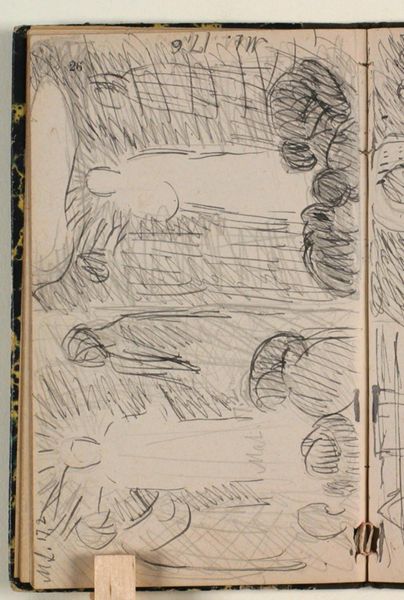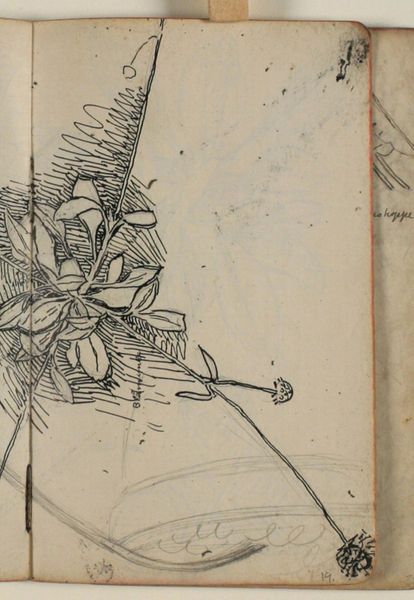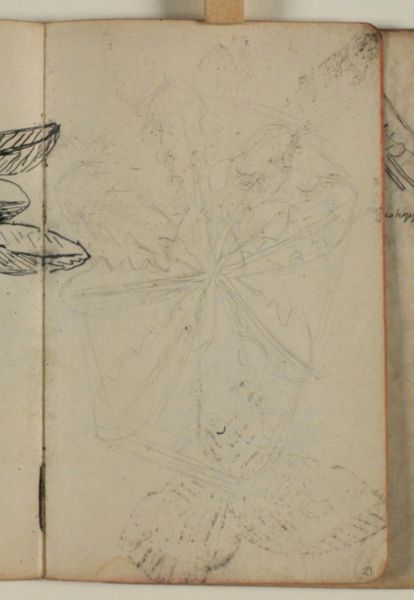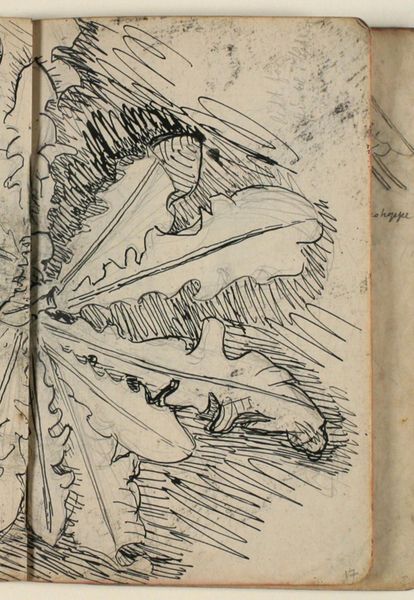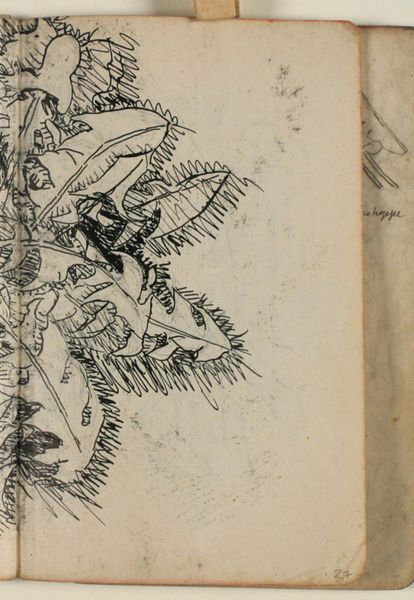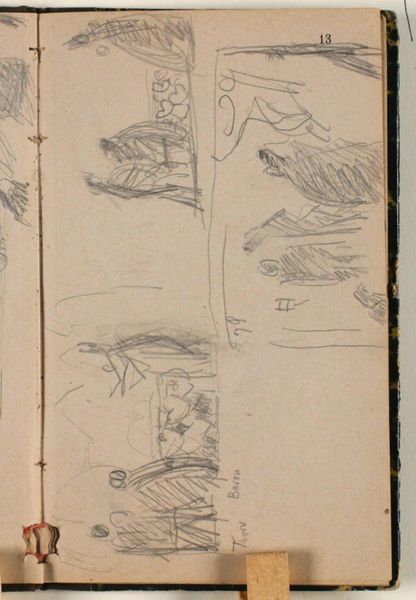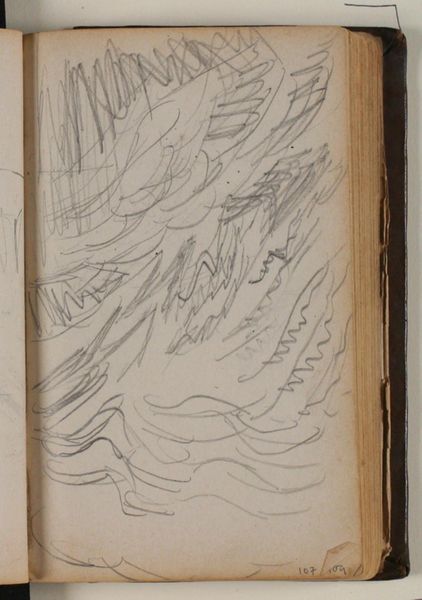
Dimensions: 161 mm (height) x 96 mm (width) (bladmaal)
Curator: What a delicate piece. I am struck by the sheer vibrancy captured in a humble pen and ink sketch. Editor: It has a fragile quality, doesn't it? And such clear interest in form; the density of ink versus the open spaces shapes a pretty striking composition. Curator: Indeed. This is "Plantestudie", or "Plant Study," a work on paper completed between 1906 and 1910 by Niels Larsen Stevns. You can view it here at the SMK, the Statens Museum for Kunst. It's an exquisite example of the artist’s more intimate study pieces. Editor: Stevns isn't an artist I am hugely familiar with, so could you unpack a bit of the historical context of these studies? Was the intention that the materials used would be easily available? The loose style evokes accessibility and a lack of hierarchy between different art forms, too. Curator: Absolutely. Stevns worked during a period where artists were keenly interested in re-evaluating the purpose of art, responding to new social and political realities and its function beyond the traditional art establishment. His connection to the Art Nouveau movement also explains his interest in natural forms. Sketchbooks were essential tools—documents of artistic development. Editor: And given this, one might wonder if Stevns chose readily accessible media as a gesture, democratizing art production at least on a personal, exploratory level. Think about it—ink, paper, the everyday nature of the subject... it’s a rather conscious set of choices. I imagine they offered a much cheaper entry point to visual art for burgeoning practitioners, when compared to oil paint, canvas and specialized brushes. Curator: That's insightful. It reflects the changing status of art and artists in society at that time; increasingly, there was a public expectation of transparency. Stevns uses the motif of plant studies also in his larger paintings and frescos; perhaps his intention here, too, was also to demonstrate skill across different materials. Editor: It really bridges what is "high" art with the everyday—making it both intimate and engaging for modern viewers. The museum becomes then, less an intimidating building but a space for people and their lives, presented to them by ways of something commonplace like an inky drawing. Curator: Precisely, making the familiar newly visible and valid. I’ll certainly remember this work as evidence of that delicate balance. Editor: As will I; thinking more about art in a museum, not just made of grand gestures but rather, one that reveals meaning with just a single pen.
Comments
No comments
Be the first to comment and join the conversation on the ultimate creative platform.

